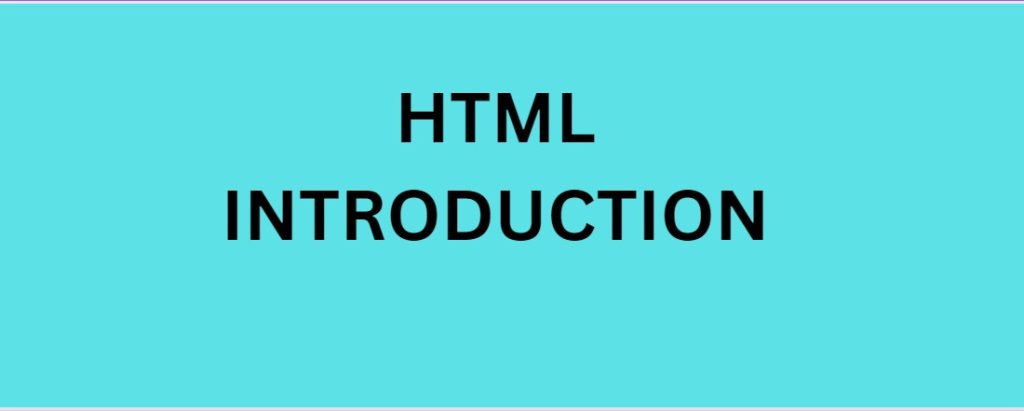HTML INTRODUCTION . HTML Stands for Hypertext Markup Language. HTML was developed by Tim Berners-Lee in 1990 AD. The Birthplace of HTML is CERN ( The European Organization for Nuclear Research). HTML is the main markup language for describing the structure of web pages. It is still the primary language to build website that reside on the World Wide Web. The website we build is electronic documents that contain connections called hyperlink to other page.
Hypertext is text displayed on a computer or other electronic device with reference to other text that reader can immediately access, usually by a mouse click or key press sequence. Apart from text, hypertext may contains tables, images and other presentation elements. It is an easy-to-use and flexible format to share information over internet.
Markup language use sets of markup tags to characterize text elements within a document, which gives instruction to the web browser on how the document should appear.
HTML Gives You Ability To
- Publish documents online with text, heading, images, lists, tables, etc.
- Accessing online information or other web resources such as images, videos or other HTML document via hyperlinks.
- Create forms to collect user input like login information, feedback, comments, or conduction transactions with remote servers etc.
- Include videos, sound clips, flash movies, applications and other HTML document directly inside an HTML document. HTML Tag
HTML markup tags are usually called Tags. - HTML tags are keywords(tag names) surrounded by angle brackets like
- HTML tags normally come in pairs like and
- The first tag in a pair is the start tag; the second tag is the end tag.
- The end tag is written like the start tag, with a forward slash before the tag name, to tell the browser that the command has been completed. content
HTML Tag
HTML markup tags are usually called Tags.
- HTML tags are keywords(tag names) surrounded by angle brackets like
- HTML tags normally come in pairs like and
- The first tag in a pair is the start tag; the second tag is the end tag.
- The end tag is written like the start tag, with a forward slash before the tag name, to tell the browser that the command has been completed. <tagname> content</tagname>
HTML ELEMENTS
“HTML tags” and “HTML elements” are often used to describe the same thing. but strictly speaking, an HTML element is everything between the start tag and the end tag, including the tags.
<p>this is a paragraph</p>
Web Browsers

The purpose of web browsers is to read HTML documents and display them as web pages. the browsers does not display the HTML tags, but uses the tags to determine how the content of the HTML page is to be presented to the user.
Web Pages
Webpage is the collection of information that is stored in the website. The WWW consist of huge collection of documents with related website called webpage. Webpage provides vast amount of information of related website.
Website
A website is a collection of web pages that can be published by an organization or individual. it contains home page and other sub pages. Each webpage is designed and updated by an individual or organization.
URL(Uniform Resource Locator)
A web page provides information about a place, person, organization or any other object. Each web page has a unique address, called a uniform resource locator that provides location on the internet. Web browser uses URL to provide information to the user. protocol, server, or domain, path, and file name are four parts or URL.
Example: http://www.rivaahcreation.com/html/default.asp
Web Servers
Web servers are computers that deliver Web pages. every web server has an IP address and possibly a domain name. for example, if you enter the URL http://www.rivaahcreation.com/index.html in your browser, this sends a request to the web server whose domain name is rivaahcreation.com. the server then fetches the page named index.html and sends it to your browers.
h
WWW(world wide web)
The internet is huge network of computers all connected together. the world wide web is a collection of webpage found on this network of computer. a broader definition comes from the organization that web inventor Tim Berners-Lee helped found, the world wide web consortium: “the world wide web is the universe of network-accessible information, an embodiment of human knowledge.”